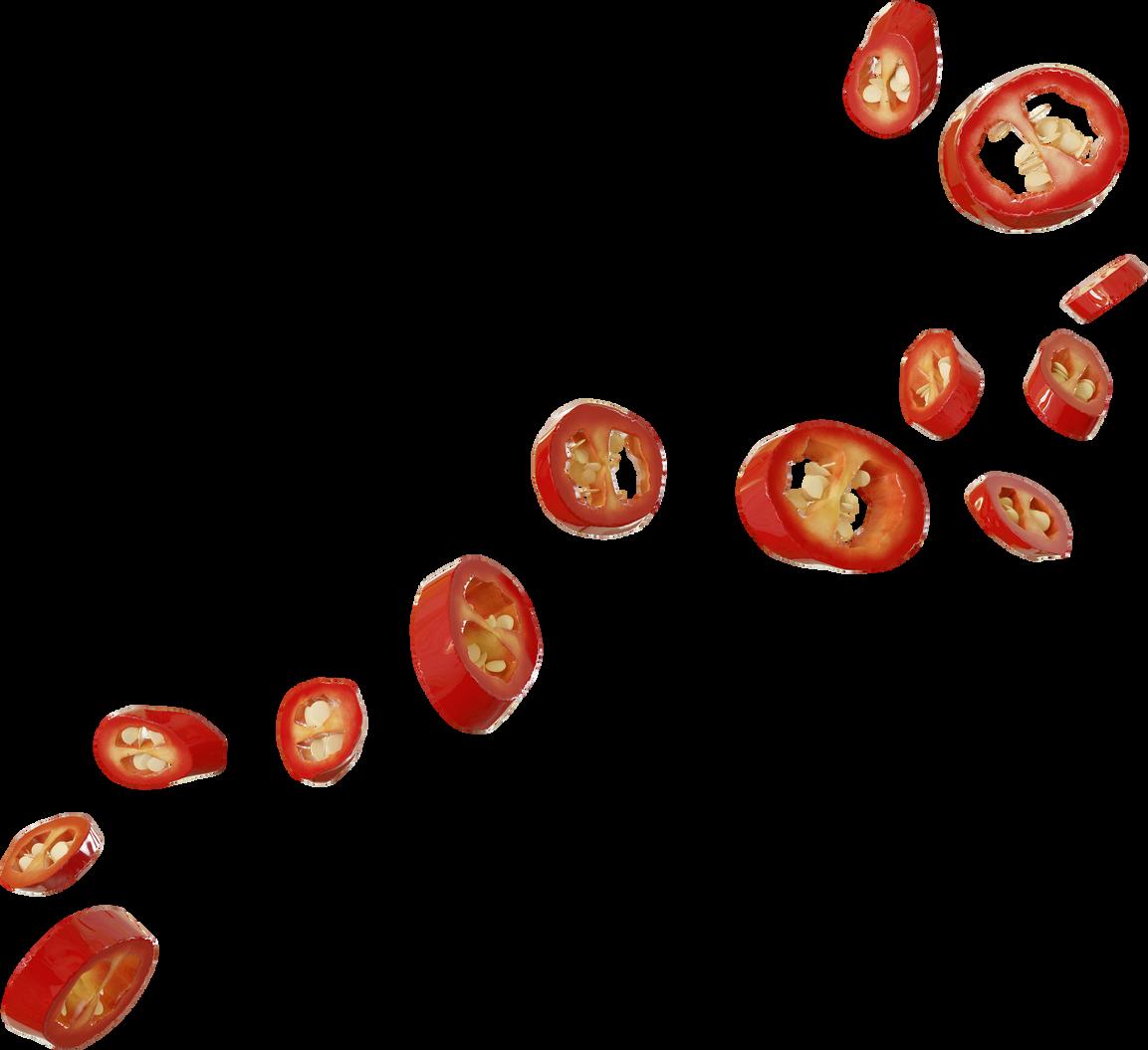

Managing Diabetes
A booklet for people with diabetes on selfmanagement care - Living well with diabetes




NAME CONTACT
BIODATA
EMERGENCY CONTACT
HEALTH PROFILE
DIABETES TYPE
Type 1 Type 2
PRIMARY DOCTOR
DIABETES MEDICATIONS
OTHER CONDITIONS
High Blood Pressure
High Cholesterol Level Heart Disease
Others:
DIABETES EDUCATOR
Others:
UNDERSTANDING DIABETES 1
INTRODUCTION TO DIABETES
Diabetes is a medical condition in which the body does not process sugar properly If not controlled, diabetes can lead to many health issues What exactly is diabetes and how does it happen?
Diabetes and Sugar
Sugar is used as the main energy sourcebythebody
Diabetes occurs when blood sugar levels are too high.
Role of Insulin
Insulin isahormonethatis producedbythepancreas
Insulinhelpstomove sugar into cellsforenergy
HOW INSULIN WORKS?

Diabetes Mechanism
In diabetes, the body does not produce enough insulinorcan'tuseitproperly Resultinginsugarstayingintheblood
Long Term Condition
Persistenthighbloodsugarcan leadtovarious health issues
Diabetesisusuallyalifelong (chronic)condition

Insulin is a hormone that helps to control the blood sugar level in your body.
It is produced by beta cells in one of our organs called the pancreas (insulin factory).
Insulin moves sugar (glucose) into the cells, which is then used to generate energy and maintain normal body functions
Excess of internal body fat makes cells less sensitive to insulin (insulin resistance).
Body cells cannot use insulin properly so the pancreas has to produce more insulin to do the same work.
TYPES OF DIABETES

TYPE 1 diabetes
The pancreas does not make insulin, because the body's immune system attacks the islet cells in the pancreas that make insulin

GESTATIONAL d
High blood sugar levels during pregnancy that typically resolves after childbirth.
This is the result of insufficient production of insulin to meet the body's increased needs during pregnancy.



Prediabetes is when blood sugar levels are higher than usual but not high enough for a diabetes diagnosis.
It is sometimes called as borderline diabetes and it increases the chance of getting diabetes.


RISK FACTORS FOR DIABETES
SYMPTOMS OF DIABETES






DIABETES-ASSOCIATED COMPLICATIONS
Diabetes can lead to a variety of complications that affect different parts of the body. These complications can arise when blood sugar levels are not well-managed over time, which leads to damage of blood vessels
If these diabetes-related problems aren't dealt with early, they could harm your organs, reduce your quality of life, or even lead to death.
Heart Disease
• Coronary artery disease
• Heart failure, heart attack
• Swollen feet and ankles

Stroke
• Weakness of one side of body
• Difficulty speaking or swallowing
• Dizziness, poor balance
Vascular Disease
• Poor blood circulation
• Narrowing of blood vessels in the legs

Feet Complications
• Poor blood circulation & healing
• Loss of sensation, dry skin
• Infections, amputation

Liver Disease
• Development of fatty liver
• Jaundice
• Liver failure
Nephropathy l Kidney Disease
• Kidney failure requiring dialysis
• Anemia
• Fluid and waste retention
Retinopathy l Eye Disease
• Visual disturbances, blurring
• Vision loss leading to blindness
• Cataract formation
Neuropathy l Nerve Damage
• Numbness of hands and/or feet
• Digestion issue: nausea, bloating
Sexual Problems
• Erectile dysfunction, impotence
• Genital infection

Osteoarthritis l Joint Problem
• Joint pain & stiffness, gout
• Degeneration of joints
• Muscle weakness, poor mobility
Therefore, it is important to get screened early and see your healthcare provider regularly. Additionally, managing diabetes through a combination of medication, diet, and exercise, is crucial to reducing the risk of complications.
Taking these steps can help you avoid the hefty toll of diabetes, both in terms of your health and your life
TESTS FOR DIABETES BLOOD
GLUCOSE TESTS
(atleast8hours)
(2hoursafterfood)
* Fasting value is <5.6 mmol/L if using capillary blood (from finger prick).
** Fasting value is <6.1 mmol/L for venous blood (taken from arm)


TARGET RANGE FOR GOOD CONTROL
*Tightcontrolisindicated forthosewithhigherrisk forheartdiseaseorin youngerindividualsas advisedbyaspecialist * Targetforthosewith shorterdurationof diabetes
CHOLESTEROL
* Tightcontrolis indicatedforthose withhigherriskfor heartdiseaseas advisedbya specialist
OPTIMISING YOUR DIABETES CARE
HEALTHIER LIFESTYLE
HEALTHY BALANCED DIET
Practise the suku-suku-separuh (quarter-quarter-half) plate recommendation for a healthier and well-balanced diet. It is easy to follow. On a 10-inch (25 cm) plate, fill a quarter of it with carbohydrates, another quarter with proteins, and the rest of the half with high-fiber vegetables But beware of starchy vegetables which contain a lot of carbohydrates and little fibre.

Drink at least 6 -8 glasses of water per day.
FRUITS



VEGETABLES PROTEIN


Take moderate amount of fruits as they contain natural sugars (fructose) which can raise blood sugar. Recommended amount: 2 portions a day.





PLANT -BASED ANIMALBASED













CARBOHYDRATE





STARCHYVEGETABLES



EXAMPLES OF DIABETES BALANCED DIET



REGULAR PHYSICAL ACTIVITY
Less sitting, more moving! Exercise is key in managing your diabetes. Exercise helps to:
Improve insulin sensitivity
Improve muscle mass & strength
Improve overall fitness

Target atleast 150 minutes perweek
About30minutesperday,5daysaweek
Reduce glucose level
Reduce body fat and weight
Reduce the dose of insulin needed
Target atleast 75 minutes perweek
About20minutesperday,4daysaweek


Before exercise:
1.

Checkyourglucoselevel15minutespriorto exercisingtoensurethelevelissafe
Below 4 mmol/L
Low Blood Sugar. Do not exercise
Refer to page 10 4 - 5.5 mmol/L
Have a light snack




2.
Havealightsnackbeforestartingexercise iffasted,feelinghungry,ordueformeal
- 15 mmol/L Safe to perform exercise Monitor for symptoms of low blood sugar
After exercise:
Checkyourbloodsugarlevel Ifbloodsugaris lessthan4mmol/L,refertopage10
LIFESTYLE MODIFICATION
STOP SMOKING
Research have shown that both smoking & excessive alcohol intake can affect glucose regulation Smoking increases the risk of developing Type 2 Diabetes in healthy individuals and worsens glucose control in those with diabetes Not to mention the risk of developing cancer and sexual dysfunction
WEIGHT MANAGEMENT
Individuals who are overweight or obese has poorer glucose control due to higher percentage of body fat Loosing body weight is linked to better insulin sensitivity. Those overweight or obese can aim to lose 10% of current body weight in thespanof6months.
Above 15 mmol/L
High blood sugar Do not exercise. Take more fluid.
Haveyournextmealwithin1houroralight snackifmealtimeismorethananhouraway.

LIMIT ALCOHOL INTAKE
Excessive alcohol consumption can lead to weight gain which can alter glucose stability For those on insulin or medications that increases insulin production, excessive alcohol intake can be dangerous as it increases the risk of hypoglycaemia (low blood sugar)
ADEQUATE REST
Adequate rest and sleep is essential for good glucose control Poor sleeping pattern is linked to higher HbA1c and heart disease It is recommended to get at least 7 hoursofsleepperday
MEDICATION ADHERENCE
Besides a healthier lifestyle, medications play an important role in regulating blood glucose level in people with diabetes It is essential to take medications as prescribed by your doctor to maintain a stable glucose level Knowing how your medication works, its common side effects, and monitoring its effectiveness are keys for better adherence and control
HOW MEDICATIONS WORK ON DIFFERENT BODY PARTS
LIVER,FATTISSUES ANDMUSCLES
Reducetheamountofsugar madebytheliver,andincrease thesensitivityoffat,liver,and musclecellstoinsulin
Eg:Biguanides(Metformin)
PANCREAS
Stimulatesthepancreasto producemoreinsulin
Eg:Sulfonylureas(Gliclazide)
INTESTINES
Slowdownbreakdownofstarch andabsorptionofsugarfrom theintestines.
Eg:Acarbose

CleanInjection Site
Cleaninjection siteswithalcohol orsoap&water Keeppentip clean
BRAIN
Reducingappetiteand inducingthesenseoffullness
Eg:Biguanides(Metformin), GLP-1receptorantagonist (Semaglutide,Dulaglutide)
KIDNEYS
Preventsthekidneysfromreabsorbingsugar
Eg:SGLT-2Inhibitor (Dapagliflozin,empagliflozin)
LIVER AND PANCREAS
Helpsthepancreasproduce moreinsulinandreducethe amountofsugarmadebythe liver
Eg:DPP-4inhibitor(Linagliptin, sitagliptin)&GLP-1receptor antagonist(Semaglutide, Dulaglutide)
INSULIN INJECTION TECHNIQUE

Ensureinjections sitesaredifferent eachtime

1to2finger’s widthapartfrom previousinjection site Avoidthe navel
Resuingneedles cancauseinjury totheunderlying tissuethatcauses pain&bleeding
INSULIN STORAGE
New pen store inside the fridge (chilling compartment)
Open / Used pen store in room temperature


Afterpressingthe injectionknob, countto10before removingneedle
Injectinsulin15to 30minutesbefore meal(fastacting insulinonly)
Avoid Extreme Temperature Do not freeze or expose to direct heat (sunlight).

SELF MONITORING
Regular self-monitoring is essential for managing health goals like blood pressure and weight For those with diabetes, checking blood sugar levels provides vital information for self-care. Target ranges and frequency varies for each individuals. Seek personalised advice from your diabetes educator.

TIMING FOR TEST
Fasting
Fastingtestisusuallydoneinthemorning beforetakingbreakfast
Before Food
The reading is used to compare against glucose result of after food. It is also importantforinsulinadjustmentinType1
After Food
This is done 2 hours after food to see the impactofthefoodtakenonbloodsugar.
Before Bed
To prevent low blood sugar during sleep andhighbloodsugarinthemorning
SPECIAL CONSIDERATIONS
Diabetes in Pregnancy
Pregnant women with diabetes has a stricter target to prevent complications to both mother andbaby


Keeping track of results and readings is essential because it helps you compare them over time, spot trends, and see how well your managementstrategiesareworking
GLUCOSE MONITORING TECHNOLOGY
Continuous Glucose Monitor (CGM), is a device used to measure glucose level without pricking your finger Asensorisplacedunderyourskintodetectglucoselevelsintheinterstitialfluid Dependingonthe device,itcanprovideongoingreadingsthroughoutthedayorperiodicallywhenscannedondemand.
Time-in-Range (TIR) represents the amount of time a person’s blood sugar readings stay within the acceptable range for good control A higher TIR indicates more stable blood sugar levels, reducing the risk of developing diabetescomplications.

Time-in-Range
With CGM, individuals can monitortheirglucoselevelsmore frequently, thereby achieving a higher TIR by reducing the frequency of high and low glucoselevelevents

DIABETES SELF-MANAGEMENT
MANAGING LOW BLOOD SUGAR
Low blood sugar, commonly also known as “hypo” (hypoglycaemia) is a condition when blood sugar is less than 4 mmol/L (or less than 70 mg/dL) When not treated, the blood sugar can drop lower, and it can potentially be fatal.
SYMPTOMS OF LOW BLOOD SUGAR LEVEL








Tremors
Tiredness
Abnormally fast heartbeat
Behaviour changes (eg, confusion, weakness and unclear speech)
Hungry Drowsiness/ Dizziness

Mood changes (e.g., anxiety, irritability and nervousness)
TREATING LOW BLOOD SUGAR LEVEL
Blood sugar < 4 mmol/L

FOLLOW THE 15-15 RULE

Take 15 g of simple sugar echeck after 15 minutes

15g OF SIMPLE SUGAR


FOOT CARE
Oneofthemostcommoncomplicationsofdiabetesisofthefoot.Hencecaringforyourfootis crucial in preventing any of the following complications Here are some way you can care for yourfeetandkeepthemingoodshape
FootUlcer/Gangrene


Daily Inspection
Checkyourfeetdailybeforesleep foranywoundsorinjuries, especiallyatthesole,heel,&inbetweentoes
Moisturise
Preventdrynessbyapplying moisturiserorlotiononyourfeet Donotapplyatin-betweentoe areas

Neat & Tidy Numbness/ Tingling




Trimyourtoenailsinastraight lineandfileanysharpedgesto preventin-growntoenail
Clean & Dry
Dryyourfeetthoroughly especiallyin-betweentoesareas. Usemildsoap&warmwaterto wash
Barefoot Donotwalkbarefooted, especiallyoutdoor Soaking Donotsoakyourfeetinwater, especiallyhotwater

Medicated Plasters
Avoidusingmedicatedcornor wartremovalplastersthatmay causeunwantedinjury
Extreme Temperature
Avoidexposingyourfeetto temperaturesthataretoohotor toocoldtoavoidinjuries
SAFEGUARD YOUR FEET
Protection
Wearcomfortablecoveredshoeswhenoutdoorsand slippers/sandalswhenindoor Avoidtightfittingfootwearandhighheelsthatmay injureyourfeet.
Control Blood Sugar
Thekeytopreventinganydiabetes-related complicationsistohaveastablebloodsugarlevel
Periodic Screening
First Aid
Ifthereisanysmallinjuries,cleanthewoundwith soap&water,thenapplysomeantibioticcream Seek medicalhelpifitdoesnotimprovewithin3days
Feet Exercises
Exerciseyourlegsregularlybyrunning,jogging,or justwalk Ifyouareunabletodothoseexercises, moveyourlegsandfeetasyouaresitting.
Visit your diabetes educator or podiatrist annually for comprehensive feet assessment This will identify early signs of neuropathy or any other foot conditions. 6 monthly assessment is recommended for those with neuropathyorexistingfootconditions
SICK DAY CARE
When you’re sick or feeling unwell, it may affect you blood sugar level Depending on the type of illness, it may lower or even raise your blood sugar Additionally, being sick means you will have less energy to focus on managing your blood sugar level which could worsen glucose control
During an infection, the body releases stress hormones that elevate blood sugar levels Consequently, blood sugar can reach dangerous levels, resulting in increased ketone levels that may trigger diabetic ketoacidosis (DKA).
Follow the steps below to better manage your sugar level when sick or feeling unwell.
SICK DAY RULE
Prevent Dehydration
Make sure to stay hydrated, especially if you are experiencing vomiting or diarrhoea Avoid sugary or fizzy beverages Take about 100-200 mls of sugar-free beverageeveryhour.
Monitor Blood Glucose
Check blood sugar levels more frequently. Fever causing infections elevates blood sugar levels, while gastrointestinal issues like vomiting and diarrhoea lowers them Monitor blood sugar every 2 to 4 hours untilstable
Continue Insulin Injections
Continue taking insulin even if youarenoteatingwell
Insulin doses can be adjusted according to blood glucose level butneverstoptakinginsulin. Consult with your doctor or diabetes educator (diabetes care team) on adjustments of insulin dosage

Ensure
Sufficient Oral Intake
Reduced appetite is expected when you’re feeling unwell
Maintaining a good oral intake is important to prevent low blood sugar level (hypo) and high ketonelevels
Take small frequent meals consisting of carbohydrate such as ice cream, soup, milk, or crackers
Ketone Testing
Besides blood sugar, testing for ketone levels is also important. High ketone levels can lead to diabetic ketoacidosis which can be potentially life-threatening. Blood ketone is preferred over urineketone
Treat Symptoms
Take medications to relief your symptoms, such as paracetamol for fever. You may need to take antibiotics for infection.
Seek Help
Youmayneedtogotoyourdoctorortheemergencydepartmentwhen: Youarenotabletoeatordrink Profusevomiting
Bloodsugarishighafterinsulinadjustment
Ketonelevelsarepersistentlyhigh
Bloodsugarislowaftertreating Youfeelworried&uncomfortable
MENTAL HEALTH CARE
Living with diabetes involves not only managing physical health but also addressing significant mental health challenges
Research has shown the relationship between diabetes and various mental health issues, ranging from clinical disorders to specific emotional responses linked to the daily realities of managing the condition This includes diagnosable mental health disorders like depression and anxiety, as well as diabetes-specific concerns such as diabetes distress.
Emotional Responses to Diagnosis
Upon diagnosis, individuals often experience a spectrum of emotions Shock, anger, sadness, and fear are common initial reactions It's normal to go through stages of emotional adjustment while coming to terms with the chronic nature of diabetes
Anxiety
Strong feelings of worry can cause anxiety Signs to watch for include feeling restless, having trouble sleeping, tense muscles, irritability, and finding it hard to focus.
Depression
Diabetes Distress

People with diabetes who have ongoing symptoms like restlessness, changes in eating habits, loss of interest in favourite activities, or feelings of hopelessness should seek assistance from healthcare providers
Diabetes distress encompasses the emotional burden and negative feelings associated with managing the condition, including concerns about complications, the constant need for monitoring, and its impact on personal relationships.
Those with distress may feel the following: frustrated or overwhelmed with self-care fear of developing diabetes complications feeling guilty with poor self-care feeling alone or lack of support
Diabetes Burnout
Unmanaged distress over time can lead to burnout Diabetes burnout is when someone with diabetes feels hopeless or gives up, which can make a person skip taking insulin, refuse medications, avoid follow-ups, or ignore important daily self-care tasks
CARING FOR YOUR MENTAL HEALTH
Self Compassion
Managing diabetes can be tough, and sometimes goals aren't met Avoid selfblame and be kinder to yourself. Describe blood sugar as 'high' or 'low' instead of 'good' or 'bad’
Social Support
Talk openly with supportive friends, family, or peers about diabetes challenges Share experiences and coping strategies Consider joining a diabetes support group to connect with others facing similar challenges.

Take a Break
When feeling overwhelmed, take a break from intensive diabetes self-care Continue managing diabetes, but consider adjusting goals or monitoring sugar levels less frequently to reduce stress
Evaluate Your Goal
Set achievable goals to boost confidence in diabetes management Loosen sugar control ranges and adjust them as goals are met
Healthcare Support
Discuss challenges with healthcare professionals Doctors, diabetes educators, or dietitians can offer tips for better management. Attend diabetes self-care classes to improve your skills.
DIABETES CARE RESOURCES 4
THE DIABETES CARE TEAM
If you have diabetes, receiving support and education is essential for staying healthy and managing your condition effectively. A diabetes care team is essential for your diabetes journey including your endocrinologist or doctor, diabetes educator, dietitian, pharmacists, ophthalmologist, podiatrist, nephrologist, and mental health professional.
Consult with an endocrinologist or doctor who can refer you to our skilled Diabetes Educators, who are experts in diabetes care and management.

Our team of highly trained Diabetes Educator offers personalized educational counseling services designed to meet the unique needs of patients with diabetes and their caregivers Our services include:




Enhance understanding of diabetes, including prevention, management, and complications
Guidance on healthy lifestyle choices
Education on diabetes medications and improving adherence
Instruction on blood glucose self-monitoring and testing techniques
Assistance in selecting the best blood sugar monitoring device
Training on insulin injection and coping skills
Advice on foot care and exercises
PEER SUPPORT - DIABETES SUPPORT GROUP

Diabetes Malaysia (Penang Branch)
A diabetes support group is a community of individuals who share experiences, challenges, and tips for managing diabetes It's a safe space to connect with others who understand what you're going through Joining a support group can provide emotional support, practical advice, and motivation to help you stay on track with your diabetes management It offers a sense of belonging and encourages a proactive approach to living well with diabetes
CONTACT INFORMATION


Thank you for using this booklet. We hope you have benefited from the information inside this booklet. You may get a copy of this booklet by scanning the QR code below. Share it to those who need it. Remember to schedule a regular follow-up with your doctor and diabetes educator.
SCAN HERE to our e-Library
Reference: 1 American Diabetes Association (2024) Standards of Care in Diabetes 2024 Diabetes Care 2 American Diabetes Association Available from: https://diabetesorg/ 3 American Heart Association Available from: https://wwwheartorg/en/healthy-living/fitness/fitness-basics/aha-recs-for-physical-activity-inadults 4 Centers for Disease Control and Prevention Available from: https://wwwcdcgov/diabetes/living-with/mental-healthhtml 5 Chacko E (2016) Exercising Tactically for Taming Postmeal Glucose Surges Scientifica, 2016, 4045717 https://doiorg/101155/2016/4045717 6 Collins L, Costello RA Glucagon-Like Peptide-1 Receptor Agonists [Updated 2024 Feb 29] In: StatPearls [Internet] Treasure Island (FL): StatPearls Publishing; 2024 Jan- Available from: https://wwwncbinlmnihgov/books/NBK551568/ 7 Diabetes Australia Available from: https://wwwdiabetesaustraliacomau/living-with-diabetes/preventingcomplications/depression-and-mental-health/. 8. Diabetes Canada. Available from: https://www.diabetes.ca/archive/managing-my-diabetes---archive/preventingcomplications/mental-health 9 Diabetes Education Online Available from: https://dtcucsfedu/living-with-diabetes/diet-and-nutrition/diabetes-alcohol/ 10 Diabetes UK Available from: https://wwwdiabetesorguk/guide-to-diabetes/emotions/diabetes-burnout#burnout 11 Diabetescouk Available from: https://wwwdiabetescouk 12 Durlach, V et al (2022) Smoking and diabetes interplay: A comprehensive review and joint statement Diabetes & Metabolism doi:101016/jdiabet2022101370 13 HarvardTH ChanSchoolofPublicHealth Availablefrom:https://wwwhsphharvardedu/obesity-prevention-source/moderateand-vigorous-physical-activity/ 14 Institute for Public Health 2024 National Health and Morbidity Survey (NHMS) 2023: Non-communicable Diseases and Healthcare Demand - Key Findings 15 International Diabetes Federation Available from: https://idforg/about-diabetes/what-is-diabetes/ 16 Kanaley, J A et al (2022) Exercise/PhysicalActivityinIndividualswithType2Diabetes:AConsensusStatementfromtheAmericanCollegeofSportsMedicine.JournaloftheAmericanCollegeof SportsMedicine,353-368 doi:101249/MSS0000000000002800 17 Li,S S etal (2017) EffectofPlantProteinonBloodLipids:ASystematicReviewandMeta‐Analysis of Randomized Controlled Trials Journal of the American Heart Association, 6(12), e006659 doi:101161/jaha117006659 18 Malaysian Diabetes Educator Society (2024) Type2DiabetesEducationManual 19 MinistryofHealthMalaysia (2018) ClinicalPracticeGuidelines(CPG)onManagementofDiabeticFoot 2ndEdition 20 Ministry of Health Malaysia (2020) Clinical Practice Guidelines (CPG) on Management of Type 2 Diabetes Mellitus 6th Edition 21 Moughan, PJ, Fulgoni, VL, Wolfe, RR (2024) The Importance of Dietary Protein Quality in Mid- to High-Income Countries J Nutr, 154, 804–814 22 National Coordinating Committee on Food and Nutrition (2021) Malaysian Dietary Guidelines 2020 Ministry of Health Malaysia 23 National Diabetes Services Scheme Available from: https://wwwndsscomau/wp-content/uploads/fact-sheets/fact-sheet-diabetes-distresspdf 24 National Health Services UK Available from: https://wwwnhsuk/ 25 National Institute of Diabetes and Digestive and Kidney Diseases Available from: https://wwwniddknihgov/health-information/diabetes/overview/%20what-isdiabetes.26.SocietyofBehavioralMedicine.Availablefrom:https://www.sbm.org/healthy-living/what-is-diabetes-distress.27.WHOguidelinesonphysicalactivityand sedentary behaviour Geneva: World Health Organization; 2020 28 World Health Organization Available from: https://wwwwhoint/news-room/factsheets/detail/diabetes
Reviewed by:
Dr. Khaw Chong Hui Consultant Diabetologist and Endocrinologist
Dr. Evelyn Chan Kam Yeen Consultant Internal Medicine
Created by: Adventist Hospital Community Health Diabetes Educators






Dr. Siew Goh Chung Consultant Nephrologist & Internal Medicine
Disease awareness campaign supported by: trisSdn.Bhd. No:201801018158(1280174-H) 3&15-04,Level15,Imazium,No.8,JalanSS21/37, ansaraUptown,47400PetalingJaya,Selangor

all:1-300-88-4325 ail:enquiry@pah.com.my wwwfacebookcom/pahpg 465,JalanBurma,10350Penang,Malaysia

wwwfacebookcom/ViatrisHealthMalaysia
